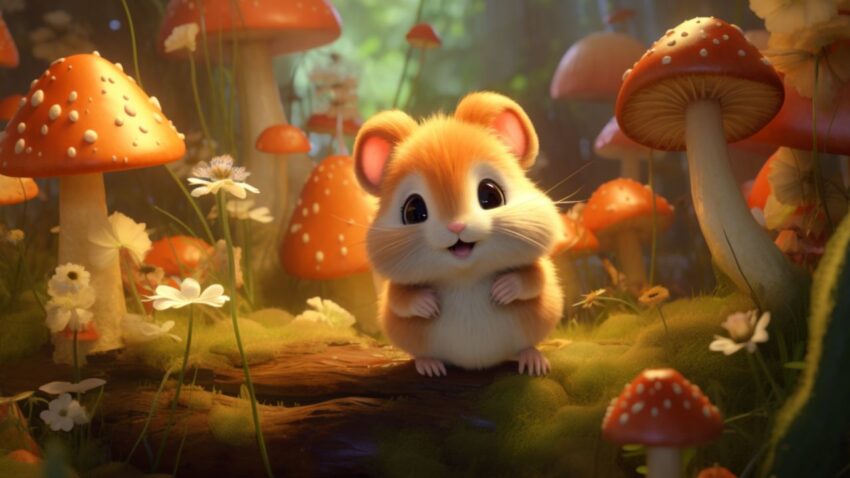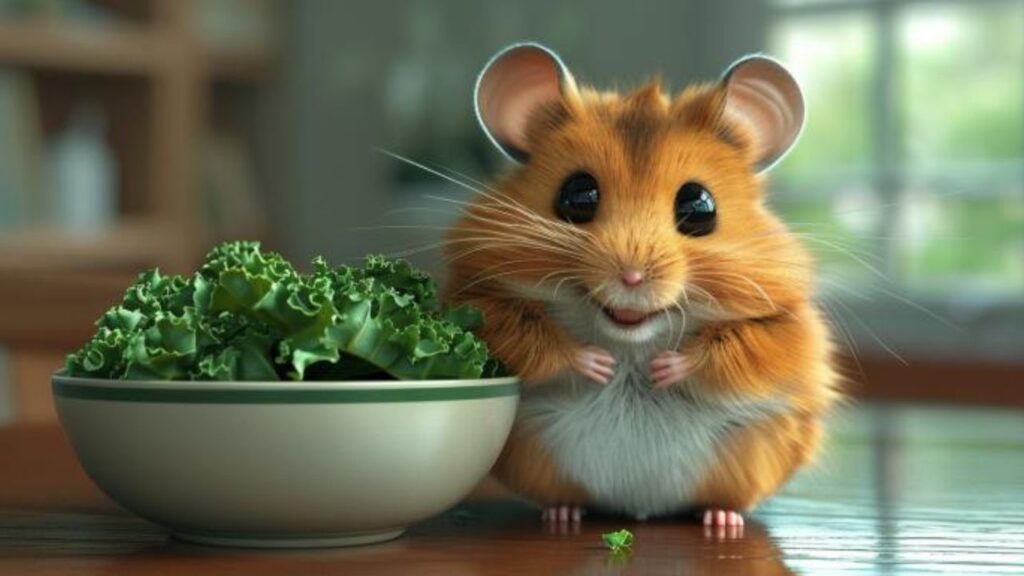TL;DR Summary
Mushrooms can vary widely in their safety and nutritional value for hamsters. While some plain, cooked mushrooms can be safe in small, infrequent quantities, many wild mushrooms or those with heavy seasoning are toxic and should be avoided. Hamsters’ digestive systems are delicate, so introducing any new food, including mushrooms, should be done cautiously. The key is to stick to hamster-safe varieties, serve in moderation, ensure they are thoroughly cooked with no added ingredients, and always observe your hamster’s reaction. It’s not a necessary part of a hamster’s diet, so it’s often safer to opt for other vet-approved fruits and veggies. Remember, when in doubt, it’s best to err on the side of caution and consult with a veterinarian.
In the quaint and curious world of hamster care, the question of dietary diversity is a frequent topic of discussion among devoted pet owners. Mushrooms, a staple in human cuisine for their rich flavors and nutritional benefits, emerge as a point of intrigue. Can these fungi find a place in the diet of a hamster, a creature so small and yet so complex in its needs? This introduction seeks to unravel the mystery surrounding mushrooms in the context of hamster nutrition. As we navigate the “fungi forest,” our goal is to demystify the role these organisms could play in enriching the diets of our tiny companions, ensuring their health and happiness. From the biological nature of mushrooms to their nutritional content and safety for hamster consumption, we stand at the threshold of a mycological dietary dive, poised to explore the interplay between these spores of the earth and the well-being of our beloved pets.
Navigating the Fungi Forest: Can Hamsters Eat Mushrooms?
The world of pet nutrition is ever-expanding, and for hamster owners, the question of whether their tiny charges can partake in the earthy goodness of mushrooms is particularly pressing. It’s a journey into the unknown, a step off the beaten path of commercial pellets and into the “fungi forest” where the lines between safe snacking and dietary danger are as intricate as the gills under a mushroom cap.
The Fascination with Fungi in Hamster Diets
Mushrooms are nature’s hidden gems, thriving in the quiet corners of our world and bursting with nutrients. This fascination with fungi is not limited to human connoisseurs. In the realm of hamster care, the question arises—could these spore-bearing entities serve as a novel source of nutrition for our furry companions?
Setting the Stage for a Mycological Dietary Dive
As we prepare to dive deep into the mycological wonders, we must tread carefully, considering both the potential benefits and risks. This section is devoted to unveiling the secrets held within these intriguing organisms and discerning whether they have a place in the diet of our beloved hamsters.
Let’s embark on this exploratory journey with caution and curiosity, seeking to understand the place of mushrooms in the dietary landscape of hamsters.
Understanding Hamsters’ Nutritional Needs
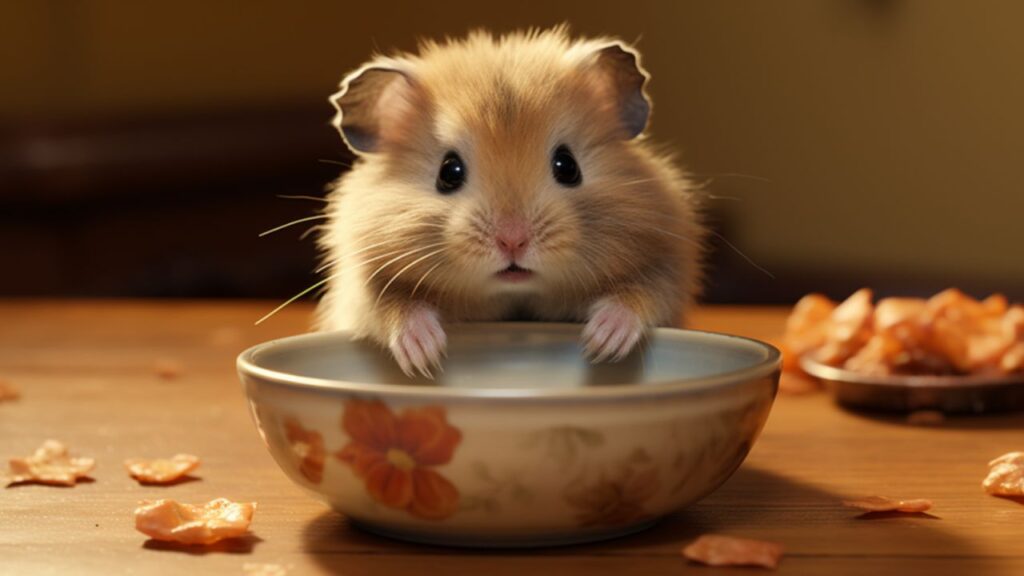
In the pursuit of optimal health for our tiny furry friends, understanding the core of a hamster’s dietary needs is paramount. These petite creatures have unique nutritional requirements that are vastly different from our own, and even slight deviations in their diet can lead to significant health issues.
A Foray into Hamster Dietary Essentials
Hamsters are omnivores, meaning they require a mix of plant-based and animal-based foods to thrive. A hamster’s diet in the wild consists of grains, seeds, insects, and an occasional fruit or vegetable. These components provide a balanced intake of carbohydrates for energy, proteins for growth and repair, fats for healthy skin and fur, as well as vitamins and minerals for overall well-being. It’s crucial that any additions to their diet, like mushrooms, align with these essential dietary needs.
The Role of Vegetables and Fruits in Hamster Nutrition
Vegetables and fruits can be excellent supplements to a hamster’s diet, providing vital nutrients and variety. Fresh produce can offer vitamins such as vitamin C, which some hamster breeds cannot synthesize on their own, and fiber that aids digestion. However, they should be given in moderation due to their sugar content and potential for causing diarrhea if overfed. It’s also essential to introduce new foods gradually and observe for any adverse reactions.
Where Might Mushrooms Stand in a Hamster’s Diet?
Mushrooms, if deemed safe for hamster consumption, could potentially offer additional nutrients not readily found in a hamster’s primary diet. They are low in calories and can be a source of B vitamins, selenium, potassium, and copper. However, their place in a hamster’s diet is not well-established. Concerns about toxicity, digestibility, and nutritional appropriateness are crucial factors to consider. Before incorporating mushrooms or any new food into your hamster’s diet, it is necessary to understand both the potential benefits and risks thoroughly, ensuring that the health of the hamster remains the top priority. The following sections will delve deeper into these considerations, laying the groundwork for a safe and healthful dietary exploration.
Mushrooms Unveiled: A Nutritional Breakdown
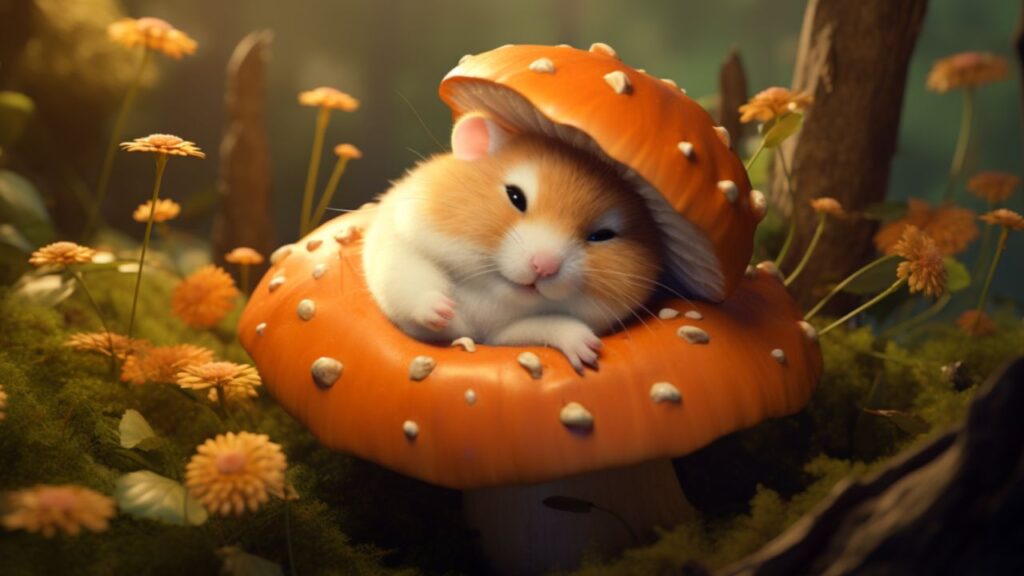
Delving into the world of mushrooms, it becomes evident that they are not a straightforward food group. The wide variety of mushrooms means an equally diverse range of nutritional profiles and potential effects on health. For hamsters, whose digestive systems are far more sensitive than ours, understanding which mushrooms, if any, are safe, is a complex but necessary task.
Identifying Safe Mushrooms for Hamsters
When considering mushrooms for hamsters, the first rule of thumb is to avoid any wild mushrooms due to the high risk of toxicity. Only mushrooms that are known to be non-toxic to humans, and that have been thoroughly washed and cooked, should even be considered for hamster consumption. Yet, even then, caution is paramount, and consultation with a veterinarian or a rodent nutrition specialist is advised.
The Goodness of Mushrooms: Vitamins and Minerals
Mushrooms can be a source of nutrients, such as B vitamins, which are essential for energy metabolism, and minerals like selenium, which can play a role in antioxidant defenses. They also contain various other minerals that can be beneficial in moderation, such as potassium and copper. However, the specific nutrient content can vary widely between different types of mushrooms.
The Bad & The Toxic: Mushrooms to Avoid
Certain mushrooms contain compounds that can be harmful or even fatal to hamsters. Some may cause gastrointestinal distress, while others can lead to more severe toxicity. The difficulty in distinguishing safe from unsafe mushrooms and the risk of cross-contamination or misidentification make them a particularly precarious choice for hamsters. The safest route is to stick to foods that are undoubtedly safe and to consult with a professional before introducing any type of mushroom into your hamster’s diet.
In the forthcoming sections, we’ll explore the practicalities of introducing mushrooms into a hamster’s diet, if at all feasible, and alternative foods that may offer similar nutritional benefits without the risks associated with mushrooms.
Can Hamsters Eat Mushrooms Safely?
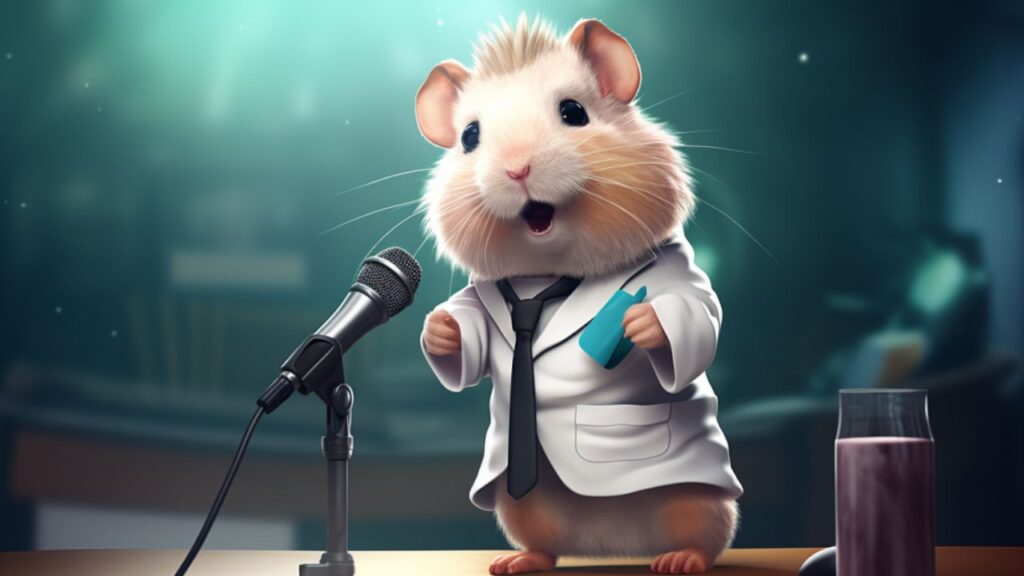
The question of whether hamsters can safely eat mushrooms is laced with caveats and calls for a conservative approach. While some mushrooms are packed with nutrients beneficial to humans, the same doesn’t necessarily apply to hamsters, and the risks often outweigh the potential benefits.
Examining the Risks: Toxicity and Digestive Health
Many mushrooms contain natural toxins that can be harmful to hamsters. Even mushrooms that are generally considered safe for human consumption may not be suitable for these small pets. Additionally, hamsters have sensitive digestive systems that can be easily disrupted by the introduction of unfamiliar foods, which could lead to digestive distress or worse.
Suitable Types and Quantities of Mushrooms for Hamsters
If one is to consider offering mushrooms to a hamster, it should only be those types that are sold in stores for human consumption and have been thoroughly cooked to break down any potential toxins. However, even then, hamsters should only consume them in very small, infrequent amounts as a rare treat. For instance, a tiny piece of cooked white button mushroom could be offered to see how the hamster reacts, but this should not become a regular part of their diet.
Preparing Mushrooms for Your Hamster: A Vet’s Advice
Before introducing mushrooms to your hamster, consult with a veterinarian who specializes in small rodents for specific advice. They can provide guidance on which types, if any, are safe, and in what quantities. If given the green light, mushrooms must be prepared properly: washed thoroughly, cooked without any additives (like salt, oil, or spices), and cooled down to room temperature. Offer only a small piece to your hamster and monitor them closely for any adverse reactions.
In summary, while there might be specific scenarios under veterinary guidance where a hamster could have a taste of certain mushrooms, it is generally best to avoid them and opt for safer, hamster-approved foods.
The Pros and Cons of Mushrooms in a Hamster’s Diet
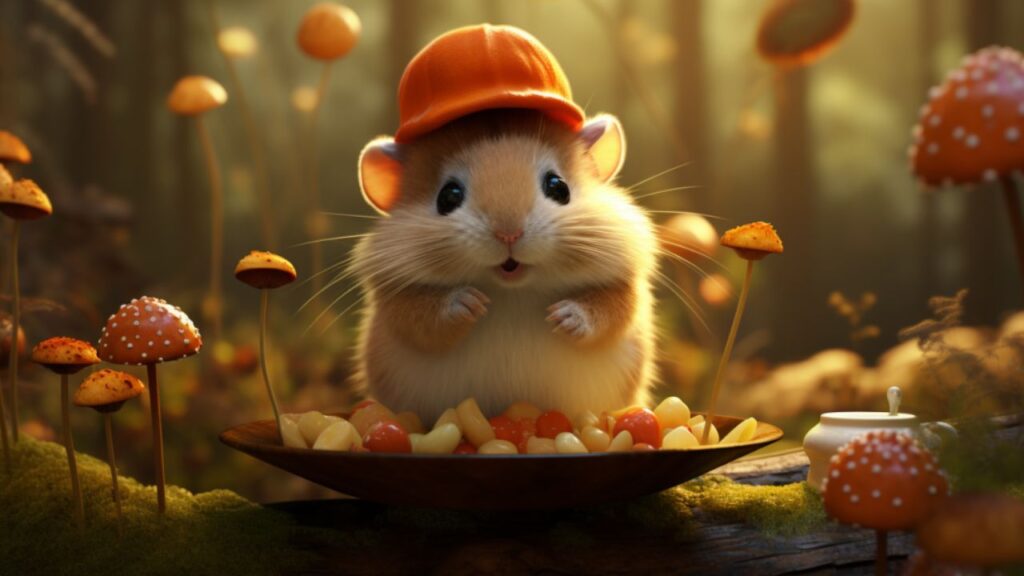
The inclusion of mushrooms in a hamster’s diet is a subject that requires weighing potential health benefits against inherent risks. As a veterinarian focused on the well-being of these small creatures, it is crucial to dissect the advantages and disadvantages thoroughly.
Potential Health Benefits of Safe Mushrooms
Mushrooms, specifically the varieties that are non-toxic and commonly consumed by humans, can offer a range of vitamins and minerals. They are known for their vitamin D content (particularly if exposed to sunlight), B vitamins, and minerals such as selenium, potassium, and copper. These nutrients can support various functions in the body and potentially boost a hamster’s immune system.
However, the key word here is “safe” mushrooms, which refers to a very limited selection that is devoid of the numerous toxic varieties that exist. Furthermore, the hamster’s need for these nutrients can typically be met with their standard diet, making mushrooms an unnecessary addition.
Weighing the Risks: When Mushrooms May Not Be Ideal
Despite these potential benefits, the cons often overshadow the pros. The foremost risk is toxicity. Many mushrooms are not safe for hamsters, and distinguishing between safe and unsafe varieties can be a challenge. A mistake in identification could lead to serious health consequences.
Moreover, hamsters’ digestive systems are not adapted to processing fungi. Introducing mushrooms into their diet can lead to gastrointestinal issues, from mild upset to severe complications. There’s also the risk of an allergic reaction, which can be difficult to manage in such small animals.
Given these risks, and the fact that the nutritional benefits of mushrooms can be obtained from other, safer sources, the general advice for hamster owners is to steer clear of mushrooms. There are ample alternatives that can provide similar nutritional value without the associated dangers.
In conclusion, while some mushrooms can be non-toxic and contain beneficial nutrients, the potential risks to hamsters are significant. It is generally advised that mushrooms be omitted from a hamster’s diet in favor of options that are indisputably safe and nutritious for these delicate animals.
Whisker Tips: Introducing Mushrooms to Your Hamster

For those hamster owners who are considering the foray into the fungal kingdom, here are some critical ‘Whisker Tips’ to ensure the journey is as safe as possible.
Selecting the Right Mushrooms: Vet-Approved Choices
First and foremost, consult with your veterinarian about which mushrooms are vet-approved for your hamster. Typically, common cultivated varieties such as button mushrooms can be considered. However, it is imperative that any mushroom intended for your hamster is fresh, organic, and thoroughly washed to remove any pesticides or contaminants.
Serving Suggestions: Portion Sizes and Preparation
If you get the green light from your vet, mushrooms should be introduced slowly and in tiny amounts. A portion size no larger than a small fingernail clipping is more than sufficient for your hamster. It is also advisable to cook the mushroom lightly without any added oils or seasonings to ensure it’s easily digestible. Never offer wild mushrooms, as they can be deadly.
Observing Your Hamster’s Response to Mushrooms
After serving, keenly observe your hamster for any signs of digestive distress or allergic reactions. These can include but are not limited to, changes in stool consistency, loss of appetite, or unusual lethargy. Should you notice any adverse effects, discontinue mushrooms immediately and consult your veterinarian.
Given the potential risks associated with feeding mushrooms to hamsters, it is generally recommended to err on the side of caution and avoid them. However, if you decide to introduce mushrooms, it should be done with meticulous care and under the guidance of a professional.
Remember, the health and safety of your furry friend come first. When in doubt, choose a different snack that is known to be safe and healthy for hamsters. After all, we aim for our hamster’s diet to be diverse, but more importantly, to be safe.
Alternative Foods to Mushrooms in Hamster Diets
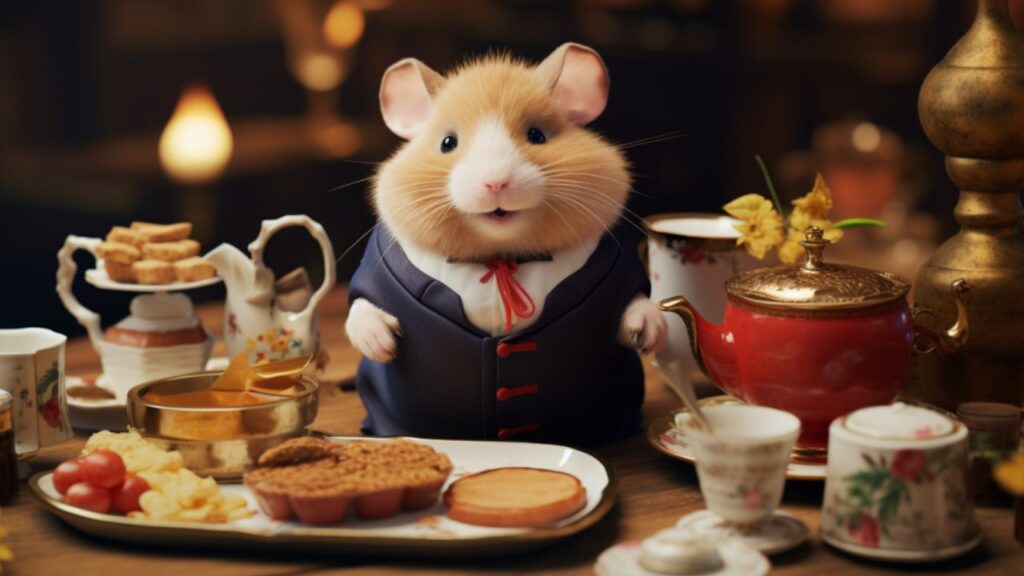
Venturing into the realm of hamster nutrition without mushrooms does not limit the horizons of a well-rounded diet for your tiny companion. Let’s explore some vegetable and food alternatives that are not only safe but beneficial for your hamster’s health.
Exploring Other Safe Vegetable Options
While mushrooms may be a topic of debate, several other vegetables are universally recognized as safe and nutritious for hamsters. Options such as zucchini, cucumber, broccoli, and carrots can be excellent choices. These veggies are high in fiber and vitamins while being low in calories and fats. Always serve them raw or steamed without any additives, and finely chopped to prevent choking.
Nutritious Alternatives That Pack a Punch
In addition to vegetables, you can offer your hamster a variety of fruits and other protein sources as treats. Apples (without seeds), pears, and berries can be given in moderation due to their sugar content. Cooked plain chicken or turkey, hard-boiled eggs, and mealworms are excellent protein sources. Whole grain bread or cereals can also occasionally be introduced. It’s important to ensure that these alternatives are free from salt, sugar, and seasonings.
When considering alternatives to mushrooms, focus on foods that offer high nutritional value without posing risks. Introduce new foods gradually and always in small quantities to monitor your hamster’s reaction. By providing a varied and balanced diet, you can ensure that your hamster enjoys a healthy life full of zest and vitality.
Always consult with your veterinarian before making any significant changes to your hamster’s diet, and keep an eye out for any signs of food intolerance or allergy. With a cornucopia of hamster-safe foods available, there’s no need to rely on mushrooms to keep your hamster’s diet diverse and nutritious.
The Final Assessment: Mushrooms and Your Hamster’s Well-being

As a guardian of a tiny, whiskered creature, understanding the dos and don’ts of hamster nutrition is crucial. The subject of mushrooms in a hamster’s diet is one that teeters on the fine line between beneficial and potentially harmful. With certain types offering a smorgasbord of nutrients and others lurking with unseen toxins, it becomes a topic that requires a nuanced exploration. This final assessment aims to provide a comprehensive viewpoint on incorporating mushrooms into your hamster’s diet, emphasizing the importance of informed and judicious choices to ensure the health and happiness of your furry companion.
The Verdict on Mushrooms: A Balanced Viewpoint
Navigating the complex world of hamster nutrition requires a careful, informed approach, especially when it comes to fungi like mushrooms. While certain varieties can be a safe supplement to a hamster’s diet, offering a range of nutrients, the risks associated with toxic types cannot be ignored. The introduction of mushrooms should be done with caution, under the guidance of a vet, and with a thorough understanding of safe and unsafe species.
Tailoring Your Hamster’s Diet for Optimal Health
Every hamster is an individual, with specific dietary needs and preferences. It’s imperative to tailor your furry friend’s diet to ensure it receives all the necessary nutrients without exposing it to potential harm. Fresh vegetables, a variety of proteins, and occasional fruit treats should constitute the bulk of their dietary intake. Always remember that moderation is key and that the core of a hamster’s diet should be high-quality commercial hamster food, which is specifically formulated to meet their nutritional requirements.
Incorporating mushrooms, when done safely, can add variety and interest to your hamster’s diet. However, it’s not a necessity, and plenty of other foods can provide similar nutritional benefits without the risks. Regular consultations with your veterinarian can help you make informed decisions about what’s best for your pet’s health.
Signature Closing
In the enchanting dance of diet and health, each step should be taken with care and knowledge. Whether or not mushrooms find their way into your hamster’s meal plan, the goal remains steadfast—a nourished and thriving companion. Always align diet choices with the joy and well-being of your hamster because, in the end, a balanced diet contributes to a delightful life for your petite pal. Remember, a happy hamster is a wheel-y happy you!

